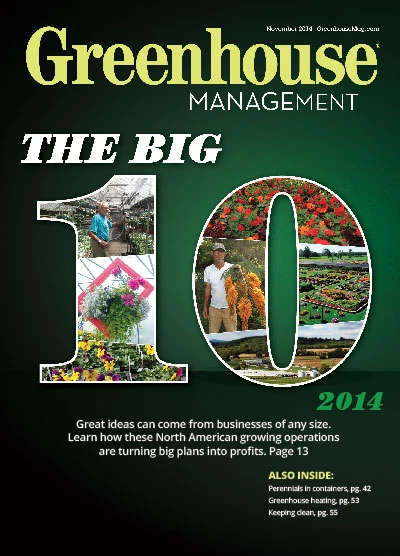 Sid Gardino’s impressive collection of the unique and unusual is testament to the fact that he is a self-professed plant hoarder.
Sid Gardino’s impressive collection of the unique and unusual is testament to the fact that he is a self-professed plant hoarder.
The 55-year-old grower and owner of Gardino Nursery specializes in the rare and hard-to-find varieties from exotic corners of the globe, and as a result he’s carved out an impressive niche for himself in the industry by simply following his passion.
“Some plants are extremely rare because they’re slow growers and, as a result, are very difficult to propagate,” he says. “Some take 20 to 50 years just to flower, which makes acquiring their seeds extremely difficult. Others are just difficult to find because they come from only one area of the world and are nearly impossible to get.”
Gardino Nursery is a horticultural Mecca for plant varieties you won’t find anywhere else in the country. Nestled away in South Florida’s steamy West Delray Beach, the facility features the largest private collection of rare and unusual plants in the U.S. Make no mistake, Gardino Nursery is not your run-of-the-mill retail grower, and to add to its mystique, visits are by appointment only.
Gardino lumps his offerings into four basic categories: Common; Unusual; Rare; and Really, Really Rare. However, he tends to focus his sales efforts more on the unusual and rare, and has achieved success during the last 20 years introducing to the market varieties that are not often used or just not that well known by the general public.
“Plants that are rare and hard to keep alive are really only for collectors,” he says, adding that collectors represent only a small segment of the overall market. “And when you come down to it, it’s very difficult to make any money on those… In fact, some people visit our nursery just to see the rare plants we have.
“The ones we do sell are easy to grow, but just not that well known,” he says. “In some instances people don’t even know they exist.”
Gardino’s recent pet project is a good example of his business strategy to bring the unique and unknown to a greater audience. He’s been propagating Lonchocarpus, a small tree from Central America that produces thousands of very elegant, fragrant purplish flowers. His goal is to begin building buzz about Lonchocarpus through local horticultural and botanical shows and getting it to appear in landscapes, which will create demand in the market. Once that demand peaks he’s on to the next unique plant project.
“You don’t see [Lonchocarpus] around so there’s really no demand right now,” he says. “It’s very easy to grow and we expect, once we get some marketing behind it, it will take off.”
Gardino has worked with plants for most of his life. He left his home in Brazil 25 years ago and took a job with a big Florida landscape company. It didn’t take long for him to notice that the company utilized a number of plant varieties that were used by everyone nearly everywhere, rarely deviating from core breeds. So Gardino suggested integrating some varieties he was familiar with in Brazil, but weren’t commonly being used here in the U.S.
“Little by little we got into using more and more unusual plants in our landscapes,” he says.
Gardino left that landscape company in 1994 to create a company that focused solely on bringing unusual plant varieties to market. Today, Gardino Nursery has grown into a 10-acre nursery offering hundreds of varieties from Central America, South Africa, Thailand, India and China.
So if you’re thinking about getting into the rare plant business, Gardino offers up some key advice.
First, know your market. Learn not only who makes up your customer base, but also their likes and dislikes, he says. More importantly, take an account of the plant varieties already available at the local large garden centers and big-box stores and head in the opposite direction.
“You want to specialize in varieties that won’t compete with what’s already being offered at the big boxes,” he says. “For example, I know of one [garden center offering rare tropicals] that specializes in Indian plants because their market has a large Indian population. So they’re able to capitalize on a unique niche.”
Think local when acquiring rare species, Gardino says. Get to know the area’s botanical gardens and join the local plant societies and garden clubs. These are not only great sources for rare plants to begin propagating, but also to meet people — and potential customers — who are passionate about rare and unique plants.
“Once you can get some [rare and unusual] plants to start appearing [in the market] you’ll see demand start to grow and before you know it a market is created,” he says.

Explore the November 2014 Issue
Check out more from this issue and find your next story to read.
Latest from Greenhouse Management
- 2025 Proven Winners Horticulture Scholarship applications now open
- How to improve inventory and shipping management in the greenhouse
- Leading Women of Horticulture: Anna Ball, Ball Hort, and Terri McEnaney, Bailey Nurseries
- GM CEA HERB Part 2: A guide to increasing the sowing density of culinary herbs
- GM CEA HERB Part 1: Best practices for producing culinary herbs in controlled environments
- USDA fires experts on invasive pests, including Asian citrus psyllid, chilli thrips
- CEA Alliance celebrates bipartisan introduction of Supporting Innovation in Agriculture Act
- Dümmen Orange North America celebrating 25th anniversary in 2025





